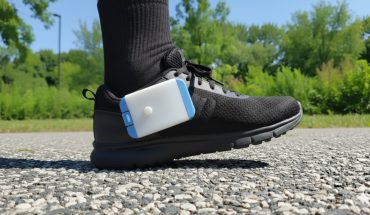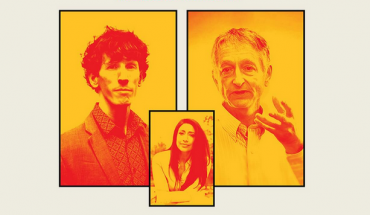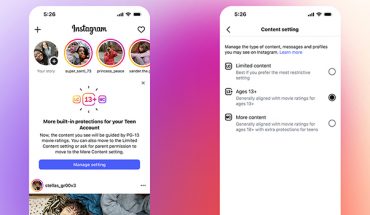It’s seen as one of the biggest technology law questions of our age, and legal fights to determine the answer have tied up many of the world’s largest technology, media and AI companies.
In court proceedings and pending lawsuits here in Canada and many other countries, giant tech firms like OpenAI, Meta, Stability AI, Cohere, and Google are defending charges that they, among others, are building powerful artificial intelligence (AI) systems using raw materials taken without the permission of – or payment to – the original human creator.
Popular and successful artists, musicians, writers, filmmakers, actors, authors and architects are among those initiating individual legal action and class action lawsuits to protect their work and defend against artistic violations by artificial intelligence.

Among many others, the UK parenting website Mumsnet has launched legal action against OpenAI over the scraping of its content – “presumably” for the training of ChatGPT.
Likewise, major content publishers and media companies around the world are also taking legal action to protect their content and trademarks.
(In just one local example, a Toronto-based artificial intelligence start-up stands accused of “massive, systematic copyright … and trademark infringement” by leading media outlets like the Toronto Star, The Guardian (U.K.), the Los Angeles Times, Politico, Vox, and more.
In a filing in the Southern District of New York, the publishers accuse Cohere of unfairly using their content to train its AI models and displaying full or partial copies of their articles; Cohere says the lawsuit is “misguided and frivolous”.
Many of Canada’s largest news media companies have also joined forces in a similar suit against OpenAI: Torstar, Postmedia, The Globe and Mail, The Canadian Press, and CBC/Radio-Canada allege OpenAI’s chatbot ChatGPT was trained on their content, which they say is “inappropriate and illegal”).
Either way, it is clear that artificial intelligence and in particular new generative AI systems can generate rich media content, including text, images, audio, video, 2-D and 3-D designs and more, when prompted by a user.
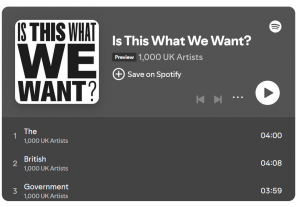
An album from various top artists has several tracks of silence in protest of the unlicensed use of copyrighted work to train artificial intelligence.
Such systems have “learned” about text patterns, image perspectives, musical composition and other creative techniques by studying enormous amounts of data, sometimes collected by “scraping” other websites’ content and collecting people’s creative output.
AI systems gain knowledge and capability from such gathered data, and when prompted, they can tap into millions of artistic examples to come up with a creative response; sometimes unique, sometimes derivative, the results are also possibly illegal, in violation of copyright and other laws.
That’s because training data gathered from the Web and used to train GenAI systems may have been taken without the permission of, or any payment to, the original human creator. Courts around the world are trying to determine if copyright-protected materials have been used to build generative AI systems like chatbots or text-to-image generators without consent – or knowledge – of the creator.
And what to do about it if so.
Depending on the outcome, verdicts in various court trials could turn the current copyright and intellectual property world on its head. Attempts to regulate or legislate standards of usage for AI tools may well come up short (in timing and in scope) if court decisions set new precedents for adjudicating artists’ moral and copyrights, fair use doctrines, trademark rules and royalty fee payments.
Copyright law protects original human expression or output. Protection for works generated by AI in which a human had little or no creative input is less definitive (a simple prompt does not count, it seems).
But some protection for some works created with the use or assistance of AI may be coming, so just how creative input and AI rendering will be balanced and protected under copyright remains to be seen.
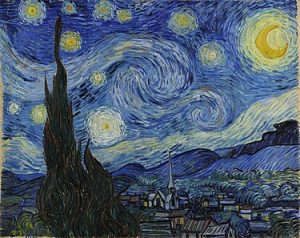
Vincent van Gogh, The Starry Night, 1889. Oil on Canvas, 73 x 92 cm. In the collection of the Museum of Modern Art.
Seen, perhaps, under a starry night.
You may have heard of Vincent van Gogh, and his famous painting. You may not have heard of Ankit Sahni, but his AI-assisted painting is being discussed in the same context, if not with the same reverence, as The Starry Night, Van Gogh’s oil on canvas masterpiece.
Some three years ago, the Canadian Intellectual Property Office granted a copyright for a Starry Night-inspired painting titled Suryast through its automated copyright registration process. To create the new work, Sahni prompted a GenAI painting app to combine Van Gogh’s 1889 painting with one of Sahni’s recent photos.
When submitting his application for Canadian copyright, Sahni listed himself and the app as co-authors; CIPO granted his application, and so generative AI is an author of a Canadian copyrighted work!
But the Samuelson-Glushko Canadian Internet Policy and Public Interest Clinic says the image does not qualify for copyright. CIPPIC says the image was created with GenAI through “a purely mechanical exercise of data entry and algorithmic luck” with “no exercise of human skill or judgment.”
As such, Suryast should be struck from Canada’s copyright registry, CIPPIC says in a court application.
A hearing on the merits of the case remains months away; CIPPIC says it expects a hearing in the latter half of this year.
Canada’s federal court could support the decision that copyright protection does extend to AI-generated work; if so, of course, AI’s role in creativity and any number of intellectual property-related issues will need to be addressed, like who (or what) owns an AI-generated work; what rights does that owner have; and can an AI system protect and license its copyright and collect royalties?
Ironically, those are the same questions many artists are asking because of AI.
# # #
Featured image from Canadian Intellectual Property Office.
-30-

